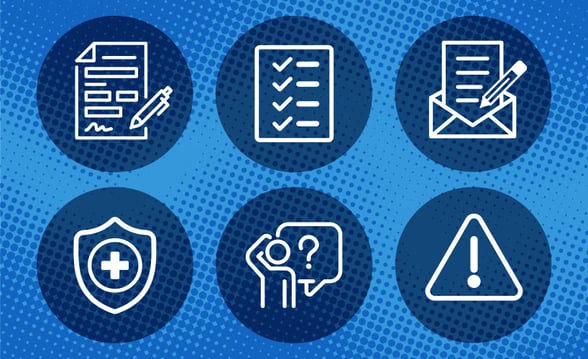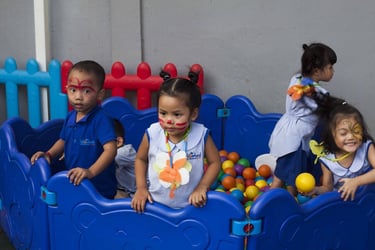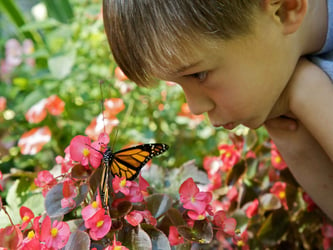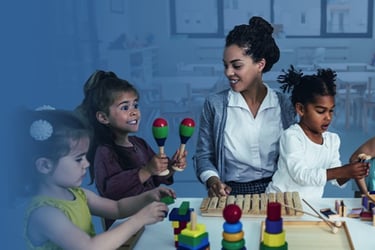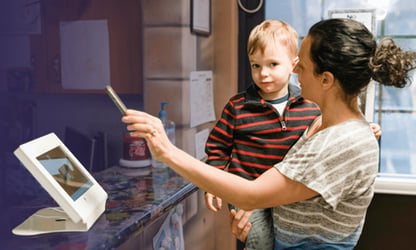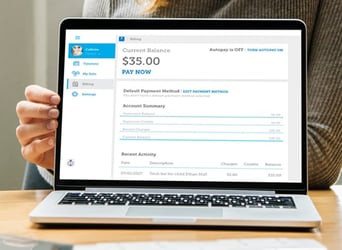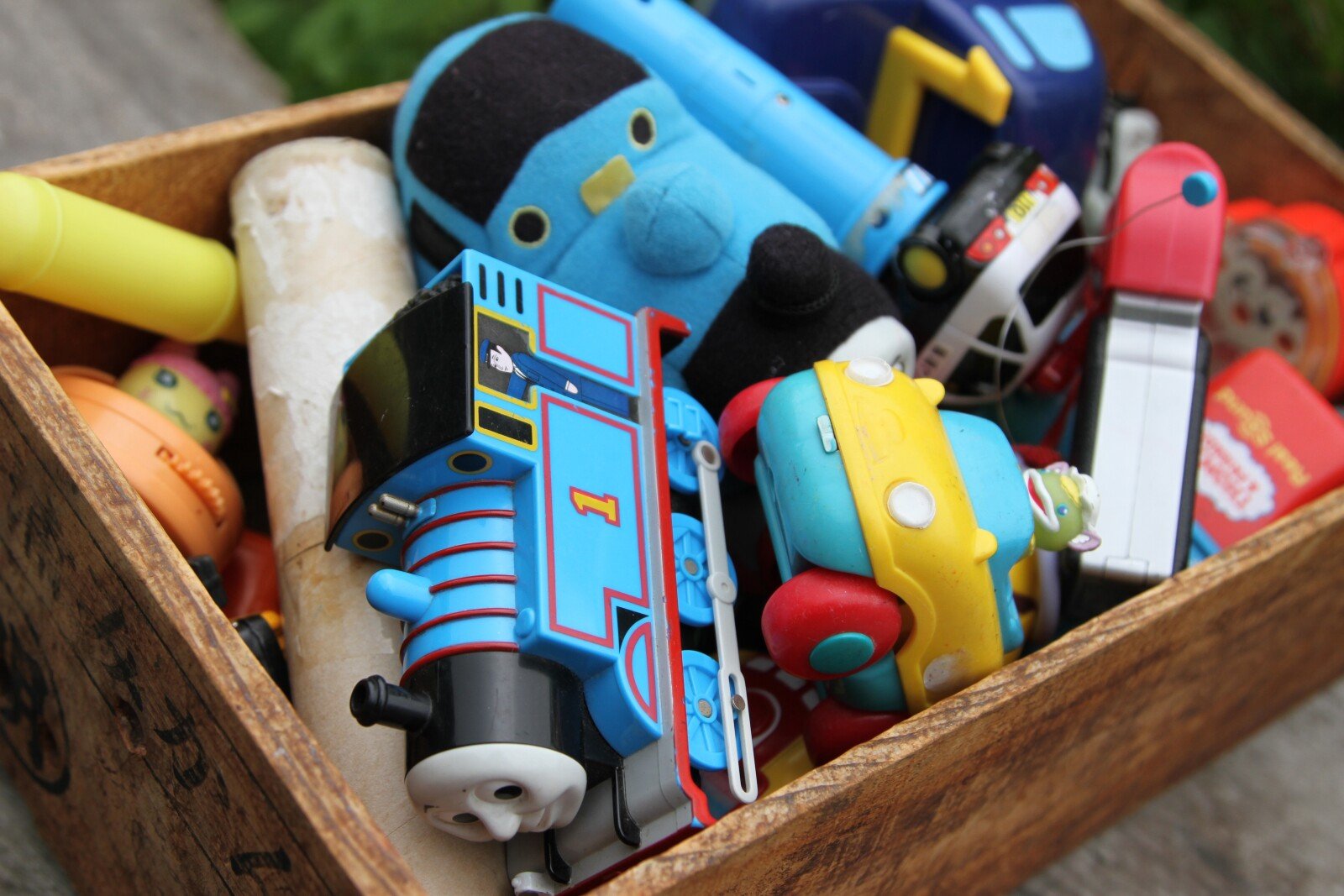
Transition activities play a crucial role in the preschool classroom, helping young learners smoothly navigate between different parts of their day. These activities promote learning and development while building essential life skills and important social skills. Explore the benefits, tips and creative ideas for implementing transition activities in the classroom.
Table of Contents
- Why Are Transition Activities Important for Preschoolers?
- What are Some Fun Transition Activities for Preschoolers?
- How to Incorporate Technology in Transition Activities
- What Are Some Tips for Successfully Implementing Transition Activities in the Classroom?
- Frequently Asked Questions (FAQ)
Why Are Transition Activities Important for Preschoolers?
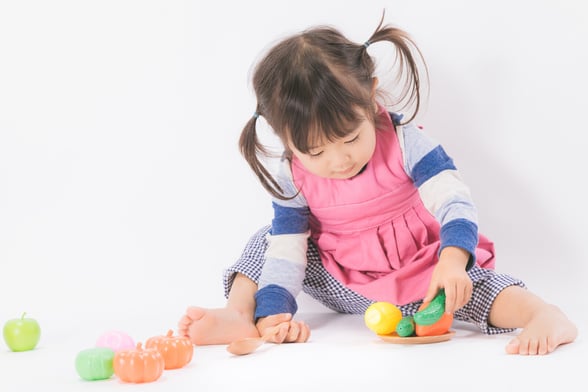
Transition activities play a crucial role in setting the tone for the day, helping children move smoothly from one activity to another. Here are some of the top benefits to engaging transition activities for preschoolers.
1. Encourages Smooth Transitions
Incorporating visual aids, such as schedules or timers, helps children grasp the sequence of events and sense of time and prepares them for upcoming transitions. Furthermore, using small movement exercises helps to regulate student energy levels. According to Lauren Brunker, a senior occupational therapist with the New York City Department of Education, regulating energy levels helps students better transition to new environments and activities.
2. Promotes Learning and Development
Transition activities also provide valuable learning opportunities for children. These activities promote cognitive development, creativity and social skills, contributing to a holistic learning experience.
Engaging in transition activities teaches preschoolers problem-solving skills by navigating new situations and adapting to change. Through these activities, children can explore their imaginations and express themselves creatively, fostering a sense of innovation and originality.
3. Builds Social Skills
Transition activities play a vital role in building social skills among preschoolers by encouraging interaction, teamwork and effective communication. These activities create a supportive environment for children to engage with their peers and develop essential social competencies.
Through these specially designed activities, preschoolers learn to navigate social situations, express their thoughts and feelings and collaborate with others in a constructive manner. The interactive nature of these exercises fosters a sense of belonging and encourages children to respect and value their classmates' perspectives.
What Are Some Fun Transition Activities for Preschoolers?
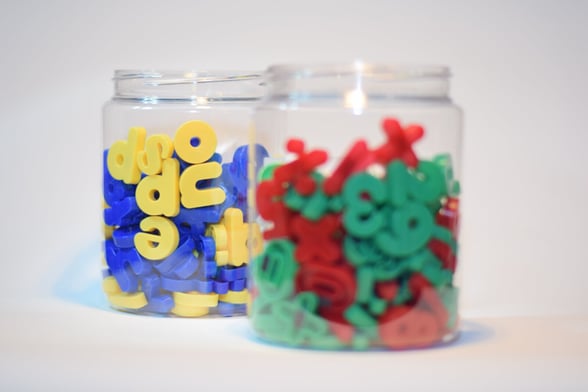
Engaging preschoolers with fun and interactive transition activities can lift their spirits and enhance their learning experience. Activities like scavenger hunts, beach ball games and creative challenges can make transitions enjoyable and memorable for young children. Consider a few activity ideas that provide something fun and engaging for preschool students, all while promoting effective classroom management.
1. Scavenger Hunts
A scavenger hunt is an exciting activity that can spark curiosity and exploration among preschoolers. By creating a list of items to find, educators can promote engagement, teamwork and sensory awareness during transitions.
Before embarking on the adventure, teachers can set up designated areas within the school grounds or nearby park where clues can be hidden for discovery. This not only allows children to connect with nature but also enhances their spatial orientation skills.
The collaborative aspect of the hunt encourages preschoolers to work together, fostering communication and problem-solving abilities. The sensory input from touching, smelling and hearing different objects adds a tactile learning dimension to the activity.
Looking for free printable scavenger hunt ideas that are well-suited for preschool children? Take a look at these examples.
2. Animal Walks
Have children imitate various animals as they prepare for the next activity and move to a new area. This is not only fun but also enhances their imagination and physical skills.
Instructions:
-
- Explain to the children that they will walk like animals as they move to the next activity.
- Demonstrate how to hop like a frog, crawl like a bear, waddle like a penguin or slither like a snake.
- Encourage the children to take turns suggesting animals to imitate.
3. Interactive Counting
Engage children to count as they transition. For instance, count steps to the next activity area or count items around the room. This reinforces math skills in a fun, practical context, while letting children know what to expect.
Instructions:
-
- Choose a counting activity that fits the transition, such as counting steps to the next area or counting items in the room.
- Encourage children to count aloud together as they transition.
4. Beach Ball Name Game
The Beach Ball Name Game is a fun way to encourage social interaction and memory skills among preschoolers. By tossing a beach ball with names or questions written on it, children can practice communication and learn about their peers during transitions. This may also help ease social awkwardness at the beginning of a new school year.
Children stand and pass the beach ball from one child to another. As they do this, they have to call out the name that their right thumb lands on or answer the question closest to their index finger. This helps them to remember names and details about their friends and promotes active listening and quick thinking.
Playing the game fosters a sense of unity and teamwork as children work together to keep the ball in play, building their collaborative skills. It's a dynamic way to introduce new classmates to each other and create a positive classroom atmosphere.
Check out this free resource for more examples icebreaker activities that kids love.
5. Breathing Exercises for Kids
Sometimes preschoolers can get a little over stimulated. That's where breathing and yoga transition activities can come in handy. They challenge children to be mindful and slow down, helping preschoolers to refocus their attention on the next learning activity. Here's a breathing exercise that is calming and fun.
6. Color Matching
Use color as a transition tool. For example, children wearing red can move to the next activity first, followed by other colors. This can also be a learning opportunity for color recognition.
Instructions:
-
- Assign each child a color based on their clothing or a color-coded object (e.g., wristbands, stickers).
- Call out colors one at a time to signal when each group should transition to the next activity.
- Encourage children to help their peers with the same color move together.
7. Ice Cream Cone Counting
Another simple exercise is the Ice Cream Cone Counting activity. By using colorful cones and pretend scoops, educators can teach math concepts in a playful manner, enhancing numerical skills and cognitive development.
Through this fun activity, children can practice both counting and basic arithmetic while enjoying the tactile experience of stacking scoops on top of each other. The visual representation of the cones and scoops helps in making abstract math concepts more tangible and easier to grasp for young learners. By encouraging children to count and sort the different flavored scoops onto the cones, educators are nurturing a strong foundation in numeracy skills at an early age.
8. Simon Says
Play a quick round of Simon Says to transition, which can be tailored to lead into the next activity. It’s a great way to improve listening skills, respond to auditory cues and follow directions. Little is needed for this activity and it is one that most preschoolers are familiar with it. This makes it easier to make alterations for your unique purpose as your preschoolers already know the basics, making any amendments to the traditional rules simple.
If you want an aid to help you play this game, this one from Kiboomers does the trick.
9. Mystery Box
A mystery box adds an element of surprise and excitement to transitions. By placing an item related to the next activity inside the box, you can pique children's curiosity and focus their attention on what's coming next. Have them guess what might be inside to build anticipation.
Instructions:
-
Place an item related to the next activity inside a decorated box.
-
Gather the children and show them the mystery box.
-
Give clues about what's inside and let children take turns guessing.
-
After the children guess, reveal the item and explain how it relates to the upcoming activity.
-
Use the item to lead into the next activity.
10. Water Balloon Toss Alphabet
The Water Balloon Toss Alphabet game combines cooling summer fun with alphabet learning for preschoolers. By tossing water balloons labeled with letters, children can engage in kinesthetic learning and enhance their literacy skills during transitions.
This entertaining game not only helps kids associate letters with physical actions but also keeps them active and engaged. The excitement of watching the water balloons burst adds an element of surprise and delight to the learning process. This activity will help promote social interaction as children take turns tossing and catching the balloons. As the children race to identify and call out the letters on the balloons, their vocabulary and phonics skills are reinforced in an enjoyable and playful way.
Learn more about using water balloon activities that enhance early learning.
11. Cleanup Song
Make cleanup time fun by singing a special song. This encourages children to take responsibility for their space and teaches them the importance of tidying up. Choose a popular children's song that's easy to remember and modify the lyrics to fit your needs. You can use the one embedded below or try this one from Super Simple Songs.
12. Traffic Light Game
The Traffic Light Game teaches children about traffic signals while helping manage transitions. Use the colors of a traffic light to indicate when it's time to stop, slow down or move on to the next activity. This visual cue helps children understand expectations and prepares them for what's coming next.
Instructions:
-
Explain the traffic light concept to the children: red means stop, yellow means slow down and green means go.
-
Create traffic light visuals using colored paper or lights.
-
Use the red light to signal that it's time to stop the current activity.
-
Show the yellow light to indicate that it's almost time to transition and to start wrapping up.
-
Flash the green light when it's time to move on to the next activity.
13. Sandcastle Building Challenge
The Sandcastle Building Challenge encourages preschoolers to unleash their creativity and teamwork skills while constructing imaginative sand structures. This hands-on activity fosters collaboration, fine motor development and imaginative play during transition times.
By building sandcastles together, children can experiment with different shapes, sizes and designs, enhancing their problem-solving abilities.
The challenge also promotes communication and social skills as the little builders share ideas and work toward a common goal.
Engaging in this fun and messy task allows children to connect with nature, encouraging sensory exploration and outdoor play.
14. Flashcard Games
Quick, educational flashcard games are perfect for engaging children's minds during transitions. Use flashcards featuring letters, numbers or pictures related to the next activity to help students practice letters, numbers, etc., capture their attention and prepare them for what's ahead.
Instructions:
- Choose flashcards that relate to the upcoming activity.
- Gather the children and explain the flashcard game.
- Show each flashcard and have children identify the letter, number or picture.
- Make the game more challenging by asking for the sound of the letter or by having children use the picture in a sentence.
- After the game, lead into the next activity using the flashcards as a starting point.
Here are some cool flashcards you can use to help you get started right away.
15. Transitions for Preschool Circle Time
Oftentimes, you'll need to gather all your students into one place. A great tool for that is circle time. To help you find the perfect circle time activity or song to go with it, we've built two free resources to help:
How to Incorporate Technology in Transition Activities
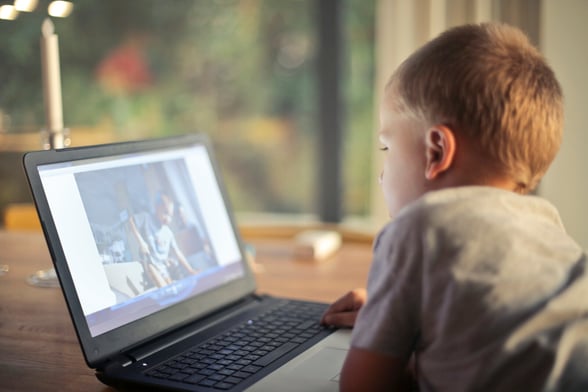
Integrating technology into transition activities can enhance engagement and learning outcomes for preschoolers. By using virtual field trips, interactive games and educational videos, educators can create dynamic and stimulating experiences during transitions.
Virtual Field Trips
Through virtual field trips, young learners have the opportunity to visit places they may otherwise never see. Whether it's traveling to the African savanna to learn about wildlife or stepping back in time to experience ancient civilizations, the possibilities are endless. This digital approach not only sparks curiosity and creativity but also fosters a deep connection with the subject matter. With the integration of interactive elements, such as quizzes, puzzles and virtual guides that include pictures, students can actively engage with the content, making learning both fun and informative as kids move from one topic to another.
If you're looking for a good source for virtual field trips, we suggest KidVision via PBS. With 100+ age-appropriate virtual field trips, they let children experience new things in short, bite-sized clips. You can view all their materials here or click to see KidVision virtual field trips.
Interactive Games
Incorporating interactive games into transition activities can make learning fun and engaging for preschoolers. Educational games that promote problem-solving, creativity and collaboration can enhance cognitive skills and foster a positive attitude towards learning.
Through these games, children not only develop essential cognitive abilities but also improve their social skills by working together with classmates. The use of technology in educational games further prepares them for the digital world and enhances their technological literacy from a young age. Interactive games can cater to individual learning styles and pace, allowing each child to progress at their own speed while still being challenged. This personalized approach boosts confidence and motivation, leading to better outcomes in their educational journey.
If you're looking for a place to find fun and engaging games to incorporate into a daily schedule, PBS KIDS has hundreds of educational and age-appropriate games that are free. Tiny Tap also has a number of games, many of which are free.
Educational Videos
Through interactive visuals, these videos can cater to diverse learning styles, making complex concepts more accessible. The use of animation and captivating graphics can enhance comprehension and retention among young learners. Incorporating videos in technology-integrated activities helps foster curiosity and critical thinking skills, preparing children for a digital age.
One example of the type of video that helps transitioning between activities is freeze dance. This classic game helps recapture the attention of little ones when moving from activities during the day. Here's a video you can use. Another educational video that could work is a sorting game, such as this one.
What Are Some Tips for Successfully Implementing Transition Activities in the Classroom?
Effective implementation of transition activities requires careful planning, flexibility and child-centered approaches. By having a clear plan, involving children in the process and being adaptable to individual needs, educators can create a positive and enriching transition experience for preschoolers.
When planning transition activities, it's crucial to consider the interests and abilities of each child. This personalized approach can foster engagement and make the transitions smoother. Incorporating flexible elements in the schedule allows for spontaneity and adjustments as needed, ensuring a seamless transition process.
Have a Clear Plan
Having a clear and organized plan for transition activities is essential to ensure smooth transitions, predictability and effective time management in the classroom. Educators can create a visual schedule, set goals and establish routines to create a structured and predictable environment for preschoolers, whether that means washing hands before a snack or singing the cleanup song at the end of the day.
This level of organization helps to manage the flow of the day and foster a sense of security, stability and emotional regulation among young learners.
By providing a consistent framework, educators can reduce anxiety and challenging behavior, allowing preschoolers to feel more confident and engaged in their learning experience.
Structured transitions also promote independence and self-regulation skills, enabling children to develop a sense of autonomy and responsibility.
A clear plan fosters a positive relationship between educators and children, nurturing trust and respect within the classroom environment.
Involve the Children in the Planning Process
Involving children in the planning process of transition activities can foster a sense of ownership and engagement. By encouraging their input, creativity and choices, educators can create a collaborative and inclusive learning community during transitions.
Through participation in planning, children develop crucial decision-making skills and a sense of responsibility for their actions. Empowering them to contribute ideas and name a favorite activity to a less preferred one boosts their self-esteem and teaches them the value of teamwork and cooperation. Involving children in decision-making processes can enhance their problem-solving abilities and critical thinking skills, preparing them for future challenges. This approach promotes a sense of belonging and inclusion, making children feel valued and respected in their educational environment.
Be Flexible and Adapt Activities as Needed
Flexibility and adaptability are key aspects of successful transition activities, allowing educators to respond to challenges, individual needs and changing circumstances in the classroom. By being flexible in approach and adapting activities as needed, teachers can create a supportive and responsive environment for preschoolers.
Flexibility also plays a crucial role in addressing the diverse needs of children, ensuring that each preschooler receives appropriate attention and support while giving them skills children need in social settings. Whether it's modifying activities, providing personalized guidance or accommodating different learning styles, the ability to adapt is paramount in fostering a dynamic and inclusive learning environment.
Frequently Asked Questions
What are transition activities for preschoolers?
Transition activities for preschoolers are short, engaging and structured activities that are used to smoothly move children from one activity to another. These activities help to keep the classroom routine consistent and provide a smooth flow to the day.
What are the benefits of using transition activities for preschoolers?
Using transition activities for preschoolers has many benefits. They help in reducing behavior problems, improve listening skills and provide a sense of structure and routine for young children. These activities also help to keep children engaged and focused during transitions.
The benefits of transition activities are well-established. For more information, check out one representative study.
How can transition activities be incorporated into a preschool daily routine?
Transition activities can be incorporated into a preschool daily routine by planning them ahead of time and making them a regular part of the day. Employ strategies to use them between different activities, such as from circle time to free play or from one classroom to another.
What are some examples of transition activities for preschoolers?
Some examples of transition activities for preschoolers include singing a song, playing a game, having a quick movement break or using a transition object like a special puppet or toy. These activities should be short, fun and age-appropriate for the children.
Consider this list of ideas for preschool-friendly transition activities.
How can transition activities be tailored to the specific needs of preschoolers?
Transition activities can be tailored to the specific needs of preschoolers by considering their interests, abilities and attention spans. It is important to choose activities that are engaging and developmentally appropriate for young children.
Are there any resources available for finding transition activities for preschoolers?
Yes, there are many resources available for finding transition activities for preschoolers. You can find ideas and inspiration from books, websites and educational blogs. You can also collaborate with other preschool teachers to share and exchange ideas for transition activities.
Here is one great example of a resource for preschool transition activities.
Get 100+ Editable and Printable Templates for Almost Every Preschool Situation
We know preschools like yours are busy. That's why we made dozens of templates to help you manage the various aspects of your organization. With billing and invoicing, activity templates, forms and even marketing materials, we have it all. Download all 100 today!





